Plex: 7 December 2022
Mapathon22, Planetary CARE, Neighborhood Economics, Vision For Good Living, Flow States,Tapestry View for Catalist Network, Tech Notes for Massive Wiki, Integrating Intelligences

The Biweekly Plex Dispatch is an inter-community newspaper published by Collective Sense Commons on first and third Wednesdays of each month. Price per issue: 1 USD, or your choice of amount (even zero).
In This Issue
- Upcoming Event: Mapathon22, Dec 16th (Vincent Arena)
- Planetary CARE Quick Takes (Forrist Lytehaause)
- “Catalytic Capital” with Neighborhood Economics (Kevin Jones)
- “Vision For Good Living” Website Launched (Killu Sanborn)
- Flow States Summary (Wendy McLean)
- Tapestry View for Catalist Network (Wendy McLean)
- New “Tech Notes” Series for Massive Wiki (Peter Kaminski)
- Integrating Intelligences: A Model for Sense-Making and Competence Building (Ken Homer)
Upcoming Event: Mapathon22, Dec 16th
by Vincent Arena
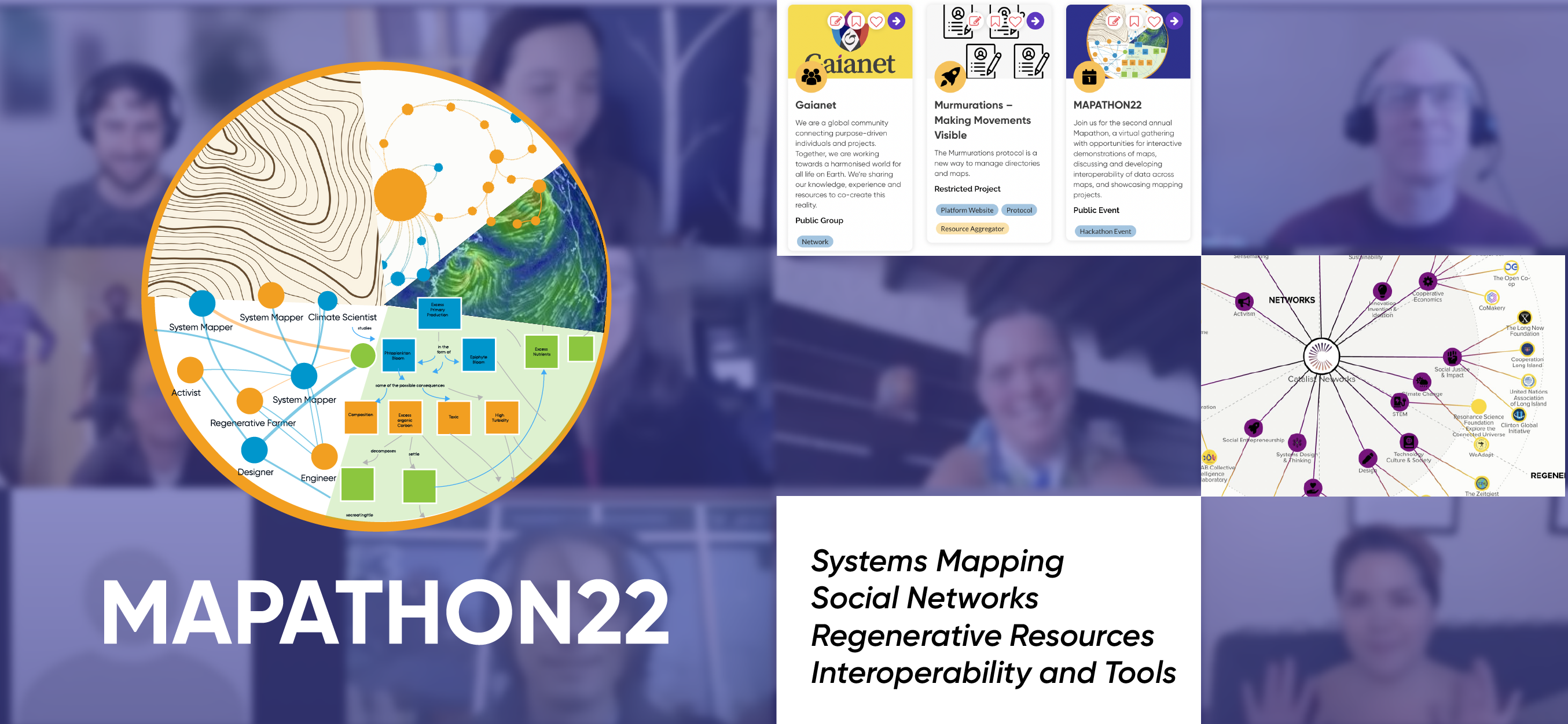
Registration Link: https://www.catalist.network/event/mapathon22
Mapathon is a 12-hour virtual gathering to explore new mapping projects, participate in interactive demonstrations, discuss and developing interoperability of data across maps, and evaluate the pros and cons of various mapping tools. The goal is to cross-pollinate mapping initiatives from many networks to catalyze collaboration amongst those creating maps to help us navigate towards a thriving planet.
If price is a barrier, use the discount code CARTOGRAPHER and pay what you can.

Planetary CARE Quick Takes
by Forrist Lytehaause
We have a few people going through both WINfinity and ImpactLaunch's Radical Transformational Leadership training. We've found both to be very valuable.
Marianne Wyne and I presented as part of Global Unity's Transformative
Impact Summit last weekend–amazing line up of people.
You can find out more about Planetary CARE on our website: https://planetarycare.org/.
“Catalytic Capital” with Neighborhood Economics
by Kevin Jones
We’ve helped to coalesce a collaborative of five Black-led innovative commercial and affordable real estate projects to pool and share the missing catalytic capital they all find it harder to get than white led projects do.
It’s in early stages but there is investor interest. It could result in being able to make a modest return in your town to invest in economic justice.
You can read more here: Neighborhood Economics: Investing to Bridge the Racial Wealth Gap.
“Vision For Good Living” Website Launched
by Killu Sanborn
Check out the newly launched Vision For Good Living website at holisticvisions.life, an example of a collectively co-created vision for a society in alignment with primordial wisdom principles and Nature.
For 12 months, 144 of us from 30+ countries held weekly Zoom sessions, also convening for a symposium in Barcelona. Under the leadership of Le Ciel Foundation, we trained to become coherent as groups, sought to engage as our best selves, and learned to coordinate between all the themes and groups, working as a global distributed community.
We are eager to connect with other groups and initiatives building a better world of good living for everyone everywhere! For more on how Vision For Good Living was born at, watch this video: Holistic Visions 2021 - A 12 lunar cycle journey (YouTube).
Flow States Summary
by Wendy McLean
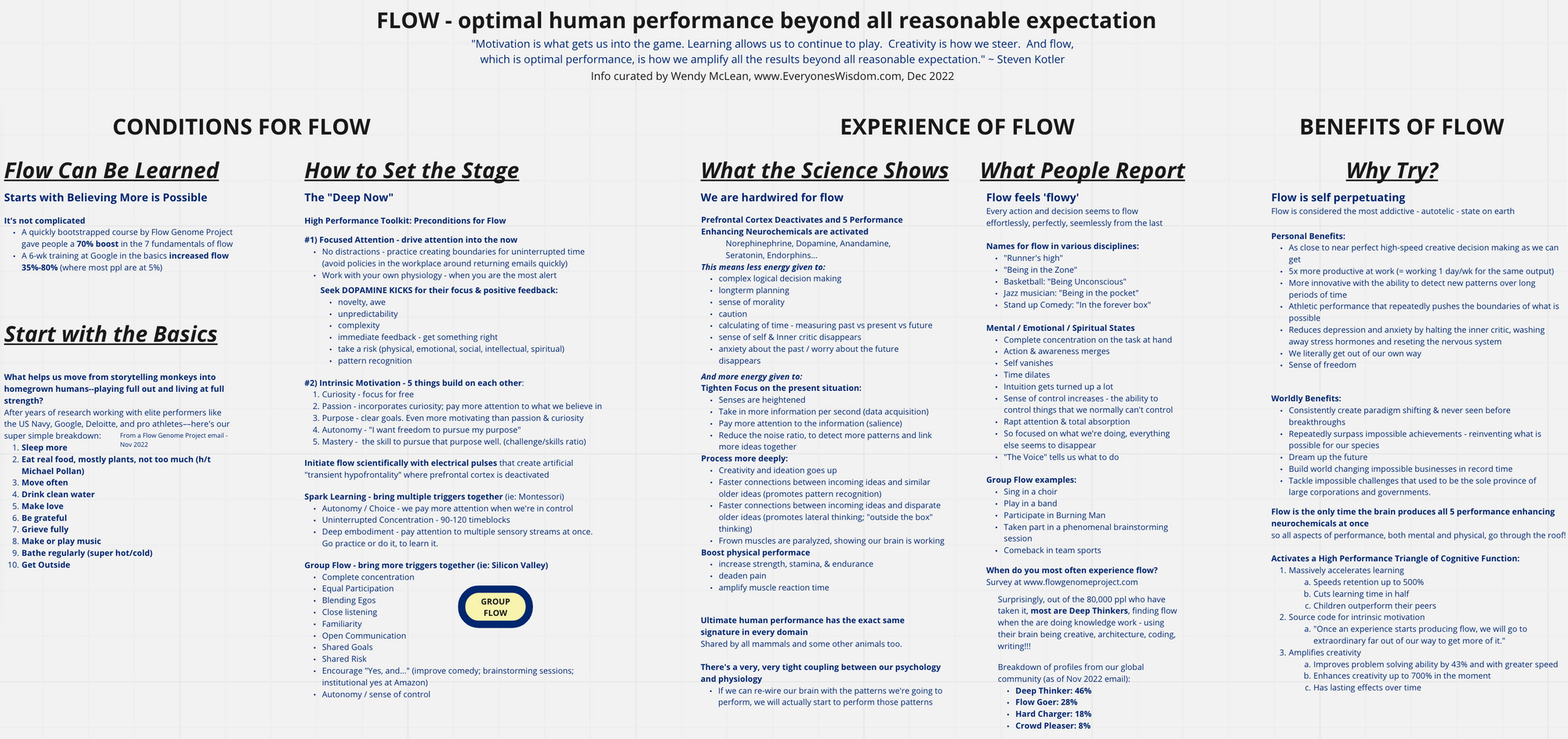
I compiled a summary of my research on Flow states. This first pass is already very compelling. Much of the science shared in this summary echoes many conversations that have been happening around engagement, self-actualization and group coherence!
Tapestry View for Catalist Network
by Wendy McLean
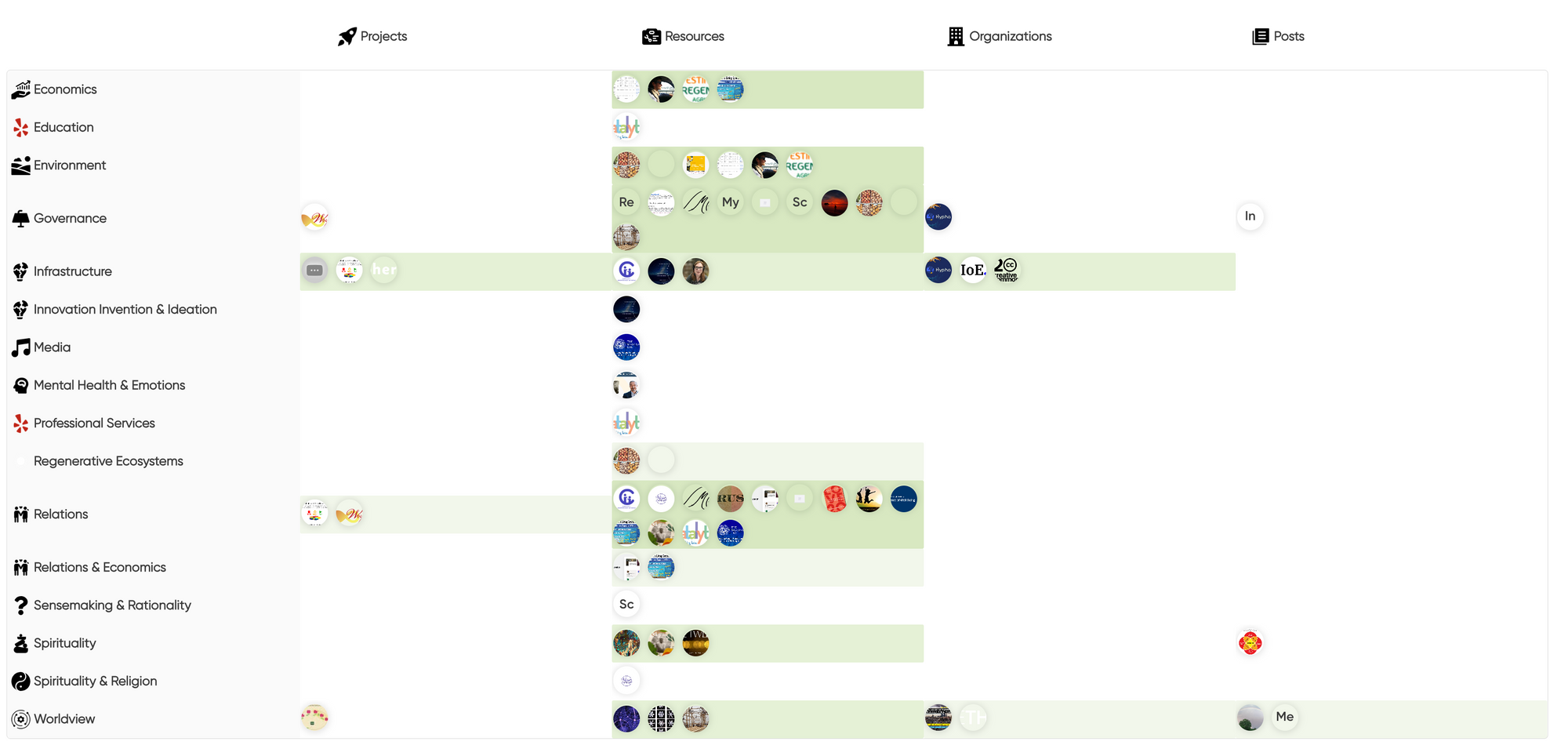
Vincent Arena and I got the Tapestry working! It's collaborative and editable. Whatever changes are made to the Trove data - adding a new object, assigning a new sector, etc - it's immediately reflected in the Tapestry View. This feature is now available for all Troves within the Catalist Network. Here is an example for a Trove I originally curated around Emerging Ideas for Meta Project.
New “Tech Notes” Series for Massive Wiki
by Peter Kaminski
We've started a new pattern called “Tech Notes” in the Massive Wiki developer wiki. Tech Notes are the spiritual descendants of the IETF's venerable Requests for Comments series, which are lightweight position papers written by the engineers creating the services that make up the Internet. RFC 3 describes their original background, in 1969:
The content of a NWG [Network Working Group] note may be any thought, suggestion, etc. related to the HOST software or other aspect of the network. Notes are encouraged to be timely rather than polished. Philosophical positions without examples or other specifics, specific suggestions or implementation techniques without introductory or background explication, and explicit questions without any attempted answers are all acceptable. The minimum length for a NWG note is one sentence.
The first Tech Note for Massive Wiki, Preferring a Different Git Forge, details the start of a move away from GitHub, towards Codeberg, a community-driven, non-profit alternative to GitHub.
The second is Permanent Versions, a proposal to create persistent point-in-time snapshots of particular Massive Wiki pages for inclusion in the broader web, that will hopefully last decades or centuries into the future.
The Permanent Versions pattern will be helpful for Massive Wikis in which the culture is to continually morph, evolve, and improve pages. Without Permanent Versions, it's hard to link from the web into such a wiki deterministically.
For more information about Massive Wiki, email Pete, or drop by the Massive Wiki chat channel.
Integrating Intelligences: A Model for Sense-Making and Competence Building
by Ken Homer
At the forefront of contemporary science, we no longer see the universe as a machine composed of elementary building blocks. We have discovered that the material world ultimately, is a network of inseparable patterns of relationships; that the planet as a whole is a living, self-regulating system. The view of the human body as a machine and the mind as a separate entity is being replaced by one that sees not only the brain, but also the immune system, the bodily tissues, and even each cell as a living cognitive system. Evolution is no longer seen as a competitive struggle for existence, but rather a cooperative dance in which creativity and the constant emergence of novelty are the driving forces. ~ Fritjof Capra, The Systems View of Life
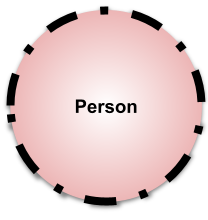
In the Integrating Intelligences model, people and their multiple intelligences are represented as spheres. Assumptions:
- Networks of living systems give rise to multiple intelligences.
- All boundaries are permeable.
- Some boundaries are more permeable than others.
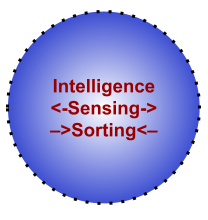
Each intelligence has two primary functions:
- Outwardly focused – sensing and data gathering.
- Inwardly focused – sorting and synthesizing gathered data into useful information/learning.
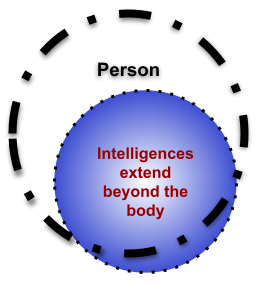
Each intelligence extends beyond the body into the field for which it is a sensory organ. Each intelligence we have access to is a local node in a larger network of intelligences that make up the world.
The Integrating Intelligences Model Focuses on Seven Intelligences
Some sources claim that people have access to over 20* different intelligences. We will concern ourselves with seven which relate to the effective coaching of individuals and teams. Developing each intelligence increases competence and fulfillment in life and work. Keep in mind the old saying that all models are wrong, some are more useful than others. This model offers some utility for those who are interested in applying it to development work.
*Other kinds of intelligence include: practical, musical, logic-math, motivational, etc. As the field is in its earlier stages definitions are still quite fluid. For more information, see this listing on the co-intelligence website.
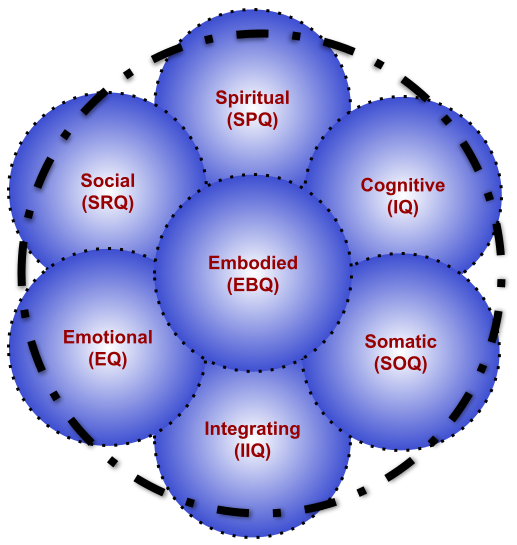
Spiritual Intelligence (SPQ) is what allows us to feel connected to something larger than ourselves – for some people that might be religion, for others, it’s family, nature, community, work, etc. It is the intelligence arising from a transcendent connection. It’s the seat of our ethics, morals, and values. Spiritual Intelligence is active whenever we feel a sense of belonging and a connection to purpose.
Cognitive Intelligence (IQ) is usually labeled as IQ. Dealing primarily with the Executive Functions of the brain, it’s our ability to observe, make distinctions, analyze, predict, forecast, plan, categorize, and imagine. Language and computation are core elements of cognitive intelligence.
Somatic Intelligence (SOQ) the body isn’t just a bag of bones. It’s an exquisite evolutionary-adapted vehicle designed to move in the world with grace and power. Much of somatic intelligence is sub or unconscious such as breathing and digestion but thanks to the parasympathetic nervous system we can tap into powerful ways of knowing to guide us in our actions. Intuition is an expression of somatic intelligence.
Emotional Intelligence (EQ) is what allows us to cope with the moods and emotions of ourselves and others. Moods are closely related to emotions but are longer lasting. An analogy is that moods are to climate what emotions are to weather. Moods are predispositions for action. If your workplace has convinced you that your efforts are in vain, your mood is likely to be one of resignation where company exhortations for “continuous learning and improvement” will fall on deaf ears. Intentionally cultivating positive emotions and moods can be enormously powerful in shifting how much meaning, enjoyment, and satisfaction we derive from life, even in the midst of turmoil.
Social (Relational) Intelligence (SRQ) is our ability to read a room, to reach out, initiate, nourish, and sustain mutually rewarding relationships. Critical to developing Collective Intelligence, SRQ is responsible for our social perceptiveness and understanding how we are relating to and supporting others – or failing to do so. Listening, communicating empathically, establishing trust, developing respect, all lie in the domain of Social Intelligence.
Integrating Intelligence (IIQ) is how well we are able to develop and apply all the intelligences listed above to take effective actions, make useful contributions, create a sense of accomplishment, build community, and live a meaningful life.
Embodied Intelligence (EBQ) is closely related to integrating intelligence, but it differs slightly because it refers to those intelligences we can apply in any given moment – something that changes constantly depending on a multitude of factors both internal and external.
Notice in the above diagram that the outer heavy dotted line that almost encompasses all the intelligences represents the totality of a person while embodied intelligence is much smaller. Think of the outer circle as the potential of a person and the embodied circle as what is available in the moment. Our potential always exceeds what is available for us to embody in the moment.
All these intelligences are different aspects of unified whole. They are closely coupled and intertwined; there are no hard lines of division between them. Each serves different functions. The distinctions offered in this model provide a coaching lens that’s useful in evaluating how a client is oriented to different domains of their life and work and offers pathways for increasing the competencies of each intelligence.
Thank you for reading! Next edition will be published on 21 December 2022. Email Pete with suggested submissions.
Many thanks to Vincent Arena, Charles Blass, Ken Homer, Kevin Jones, Forrist Lytehaause, Wendy McLean, Killu Sanborn, and Marianne Wyne for their contributions to this issue.